












































Regular maintenance is necessary when caring for a lawn, and various strategies translate into thicker, greener and healthier grass. Much like car owners routinely get an oil change or tire rotation on their vehicles, homeowners should recognize that certain lawn care strategies are periodically necessary to keep a property looking its best. Aeration is one task that can complement other lawn care strategies throughout the growing season.
What’s lawn aeration?
The Home Depot says that aeration involves making holes in the lawn to loosen the soil underneath. Over time, the lawn and soil can become compacted, creating a layer of thatch that forms between the soil and the grass in the lawn. Thatch can prevent air, water and fertilizer from reaching the roots of the grass, eventually
made during aeration allow oxygen, water and nutrients to reach the lawn’s roots.
Aeration can be good for a lawn, but it can cause stress to the grass if timed improperly, advise the lawn care experts at Pennington. Cool-season grasses common in northern lawns should be aerated in the early fall or early spring. Warm-season grasses should be aerated in the late spring or very early summer. Aeration should be done right before the grass reaches peak time for natural growth.
Homeowners can use different aeration equipment, including manual and automated machinery. Some homeowners wear spiked aerator “sandals” strapped to shoes to walk across the lawn. These may be useful on a small scale, but not on
larger properties.
Slicing aerators have rotating blades that slice through grass and thatch into the soil. Core or plug aerators often are preferential for lawn professionals. Hollow tines remove plugs of soil from the lawn and deposit them on top where they break down.
According to The Spruce, it is necessary to water the grass every two to three days after a lawn has been aerated. This also is the time to perform overseeding. Apply a quality, slow-release fertilizer to revitalize the lawn. Wait at least a month before mowon the lawn after aerating to prevent grass damage. Aeration is an important step to maintain lawn health. While aerating can be labor-intensive, the end result of a lush lawn can be worth the extra effort.



BY JESSICA DAMIANO Associated Press
Gardeners tend to have favorite plants that they grow for years. But it's fun to try new ones. Each year, Selections organization en-
horticulture professionals to serve as plant-trial judges. They grow new plants alongside currently avail-
disease resistance and other characteristics. Whenwinners for the following plants include seven edi-
There's a bright purple
plants.
So, it's helpful to know that each year, the indepen-ca Selections organizationaround the U.S. and in Canada to serve as plant-trial judges. They're tasked with growing the new plants side-by-side with currently available varieties andresistance and other char-
able disease resistance, this new basil was also notit a longer shelf life after harvesting. The dense, bushy plant also was lauded for vigorous growth and health, even in challenging conditions. (Bred by Garden Genetics and Seeds by Design)
(National Winner)
"purple" in Japanese. So,
When the results are for the following year, which coincides with their
ture and easy to harvest,

brant, disease-resistant
parison plants.
been growing for years and will continue to grow, like fragrant and tasty Big
tional or regional winners.
Basil Piedmontgional Winner: Great Lakes and Heartland)

www.sandstrash.com

fuchsia in vinegar and golden brown when sauteed or roasted). (Bred by (National)
Judges found this purple kohlrabi grew well in both spring and fall and produced crack-resistant, long-lasting bulbs with also offers a longer harvest
window than other varieties and tasty leaves. (Bred by Bejo Seeds)
leaf spot disease, continually produced sweet, yellow, snack-size peppers throughout the growing
(National)
noted for "outstanding" resistance to bacterial














continued from page 4
Squash Green Lightning F1 (National)
Appreciated for its small seed cavity, which equates to a higher proportion of Green Lightning lived up to its name in the trials, impressing judges with its early maturity. Further, one judge noted, "This entry not only looked better but also tasted better than the comparison. The color and pattern of the squash was novel and cute-pretty enough to use as a decoration. When cooked, this squash had a nice robusted seasonings." (Bred by Joseph Stern; marketed by PanAmerican Seed)
Squash Thriller F1 (National)
Judges found this color-shifting squash unique, well-adapted and easy to grow. The plants produce 1-to-2-pound fruits with bright orange-, green- and cream-ridged vertical stripes that shift color as they mature. (Bred by Sakata America)
Tomato Tonatico F1 (Mountain/Southwest, Northeast)
Judges were impressed with the taste, texture, yield, disease resistance and reduced fruit cracking and splitting of this upgraded cherry tomato. Tonatico also was lauded for its strongly attached, uniform fruit clusters that detach easily at harvest time. (Bred by Bejo USA)
Celosia Flamma Pink (National)
Pink, the latest introduction in the Flamma Celosia series, is a semidwarf, easy-to-grow pink variety of celosia noted for exceptional blooming and vibrant, long-lasting
commended its vigorous performance even in hot and humid weather, and its longer-than-expected vase
Clover Seed Co., Distributed in North America by Sakata Seed Corp.)
Vinca Sphere Polkadot (National)
Judges called this vigorously blooming vinca




variety resilient and beautiful. With a naturally compact, rounded habit, the plant blooms throughout the summer, thriving in hot, dry conditions and boasting superior disease resistance and durability against heavy rain and storms. (Bred by Miyoshi & Co. Ltd.)
Zinnia Crestar Mix (National)
Crestar Mix combines "the best" crested -- or Scabiosa-type -- zinnias in one seed pack. The distinctive semi-double, pink, orange, red, white, peach and well for mass plantings and succession sowing, providing a continuous supply of
The sun-loving plants also tolerated heat and humidity well in the trials. (Bred
by Takii Europe)
Dahlia Black Forest Ruby (National)
Featuring a range of semi-double to double ru-
black-foliage backdrop, the sturdy, disease-resistant plant impressed judges on two continents with its overall durability, as it also received the Fleuroselect award for superior performance in European trials. (Bred by Takii Europe B.V.)
(National)
This new dianthus thrived through the test gardens' summer heat. Its held on long stems, are suitable for bouquets in cut-and-come-again fash-
ion, and a quick shearingcourage a vigorous comeback. (Bred by Selecta One)
Marigold Mango Tango (National)
This marigold boasts bi-color, yellow-and-red blooms on compact, vigorous plants that provide nonstop color over an extended season. The variety, which also won the Fleuroselect award for performance in European trials, is well-suited for both borders and containers. (Bred by Ernst Benary of America, Inc.)
Nasturtium Baby Gold, Nasturtium Baby Red and Nasturtium Baby Yellow (Heartland, Mountain/Southwest, Northeast)





Also recipients of the Fleuroselect award for performance in European trials, these new entries in the Baby series of petite, mounded nasturtiums produce golden-yellow, rich
that contrast nicely with their dark-green leaves. The judges praised their uniformly compact habit, and intense, non-fading Europe BV)
Petunia Dekko Maxx Pinkland, Northeast, West/ Northwest)
This slow-maintenance petunia's fast-growing, compact, spreading habit and abundance of non-fading pink blooms impressed judges during summer trials. Flowers blanketed plants throughout the
season and held up well against heavy rain and Syngenta Flowers)
Petunia Shake Raspberry F1 -
ed raspberry milkshake swirled with lemon-lime green sorbet on a superi-
this compact plant impressed with its heat resistance and season-long colBV)
Snapdragon DoubleShot Yellow Red Heart F1
This candy-scented snapdragon bloomed earlier than comparable varieties in the trials. Trial judges noted its healthy, vigorous growth, long-last-
Zinnia Zydeco Fire
This vibrant, disease-resistant zinnia variety
double blooms held atop sturdy stems. Judges found more resilient than those of comparison plants.ers)
Jessica Damiano writes weekly gardening columns for the AP and publishes the award-winning Weekly Dirt Newsletter. You can sign up here for weekly gardening tips and advice.
For more AP gardening stories, go to https://apnews.com/hub/gardening.


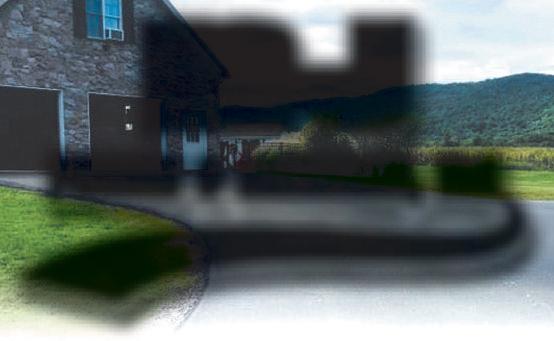









Birds are beautiful creatures that can make a lawn and garden feel even more serene. Providing snacks to supplement what birds guarantees up close and personal interactions with the scores of species that call neighborhoods home.
Bird feeders are particularly important in colder climates and during wintertime when food may be scarce. Keeping birds well fed helps them survive over winter and continue to repopulate in the spring. Bird feeding isn’t all for the birds, either. Ashley Dayer, an associate professor in the Department of Fish and Wildlife Conservation at Virginia Tech, argues that feeding birds also is a it stimulates compassion for the animals.
The type of bird feeder a person places in the yard determines which species may be drawn to the property. The following are various types of feeders to consider.
Suet feeders
Suet cakes are high-energy food sources that attract birds like woodpeckers and nuthatches. They are colder months or regions where birds need extra fat for energy. These cage-like feeders snap around the rectangular suet cake and hang from a pole or tree.
Ground feeder
Ground feeders are simple screen-bottomed trays that sit several inches off of the ground or on a
deck to help keep seeds and grain from coming in contact with droppings.
Ground feeders are a favorite of juncos, sparrows, among others.
Sugar water feeder
These feeders come in different shapes, from tubes to round dishes, and are magnets to hummingbirds. They typically have red coloring to be more attractive to those high-
Nyjer bird feeder
Small birds like gold-jer seeds, which are tiny, black thistle seeds. These feeders are tube-shaped

mesh socks designed to small feeding ports prevent seed waste and cater to the
These are the feeders many people think of when they envision bird feeders. Hopper bird feeders hold a large amount of seed and often have a roof or a design that mimics a house or barn. The covered design helps to keep seeds dry and might be the best hanging feeder for people who live in areas with a lot of rain. Hoppers will attract blue jays, grackles, cardinals, and blackbirds.
Tube feeders will attract an array of birds. They are cylindrical in shape with various ports to enable birds to perch and feed.
Window and smart bird feeders
These types of bird feeders attach to windows to allow homeowners to view the birds up close. Smart varieties have cameras on the feeders that will send a feed via an app to a smart phone or computer. Some even may identify the bird species on the feeder at any given point in time. Bird feeders provide enjoyment for bird watchers and nutritious food various species.










































BY JESSICA DAMIANO
Associated Press
They dig, they pee, they trample. Every gardener who has a dog knows it's hard for them to coexist with garden plants. How can you keep each safe from the other? Protect your dog by avoiding any plants that are toxic to pets. Avoid using chemicals. Choose a resilient lawn grass, though there might not be one tough enough to survive regular kicking from a larger dog. Plant garden beds densely so dogs won't run through them. Use fences. Also, consider creating a digging and play zone. You can enclose it with fencing and put dog toys there. Provide plenty of water. Yes, you'll likely have to lower your aesthetic standards some. But enjoying two of life's greatest pleasures is well worth the compromise.
If you've ever had a dog, you know they don't exactly tiptoe through the tulips. I'm fortunate that none of mine ever
had a penchant for digging holes, but my late pit bull, Maddie, used to run through my perennial beds like a weed whacker, leaving hori-
black-eyes Susans in her destructive path.
Her bathroom breaks would also imprint an ever-expanding array of canine crop circles on the lawn.
Fortunately, my little Havanese, Miguel, doesn't pose as much of a threat to my plants, but there are other important elements to consider when planning a garden where dogs and plants can safely coexist.
Let's start with the lawn
The type of grass you select should be suited to your region and your sun exposure. In my sunny Northeastern front yard, that means starting with a Kentucky bluegrass seed blend, which holds up well against foot and


in roughly 10 percent each of urine-resilient perennial ryegrass andcue.











For further protection, consider incorporating a trample- and urine-resistant groundcover into your grass-seed recipe. I've added clover, which also enriches the soil with safe, nourishing levels of nitrogen (free fertilizer!) and reduces or eliminates groundwater pollution from my property.
If you have a beagle-size dog or two, this will go a long way toward
See Dog / Page 12











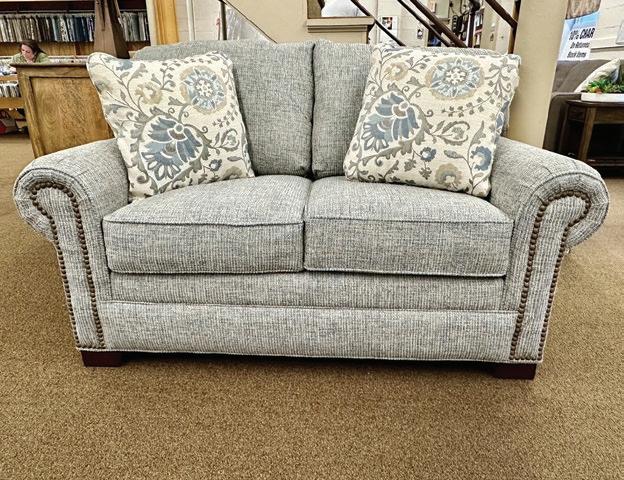





Homeowners know there’s no shortage of ways to tweak a property. Some homeowners may lament that the work associated with home ownership is never done, but owning a house also provide endless opportunities to upgrade the spaces people call home.
Landscape lighting has become increasingly popular in recent years. That popularity is undoubtedly due to a number of variables, and each highlightsscape lighting around a property.
• Affordability: Some may think of big budget projects like kitchen remodels or room additions when pondering home renovations. Such projects can have a dramatic impact on the look and feel of a home, but landscape lighting can be equally transformative at a fraction of the cost of larger undertakings. The home renovation experts at Angi.com estimate the average landscape lighting project costs around $4,000, making affordability a no-
• Appearance: There’s no denying the aesthetic appeal of a well-lit landscape at night. Landscape lighting can be utilized to draw attention to awe-inspiring components of a landscape, whether it’s natural features like gardens and foliage or manmade components like architectural features. Improved appearance can increase curb appeal, which is often associated with how a home looks during daylight hours. But photographs of a well-lit nighttime landscape can impress buyers as well.
• Cost savings: Landscape lighting might help
homeowners reduce the cost of their homeowners insurance. Researchers at PolicyGenius.com found that insurance companies typically offer a discount of 2 to 5 percent to homeowners who install a home security system. Insurance providers may offer additional savings to homeowners who pair such systems with landscape lighting, which can be a deterrent to burglars who prefer to operate under a cloak of darkness.
may discount premiums because of landscape lighting because they view it as a deterrent to potential criminals. But landscape lighting also makes moving around a property at night safer for residents and guests. Lighting can be used to illuminate walkways, outdoor living rooms, patios around pools, and other areas where residents and guests will be walking at night, which can reduce the risk of falls and injuries that may result from such spills.
• ROI: Savvy homeowners consider a renovation’s return on investment before deciding to go forward with a project. Studies vary, but the National Association of Realtors indicates landscape lighting can recoup as much as 70 percent of homeowners’ investment in the project at resale. When viewed through the lens of ROI, the cost of installing landscape lighting is even less.
Landscape lighting adds notable aesthetic appeal to a home at a fraction of the cost of other renovation
lighting provides make the project one every homeowner can consider.










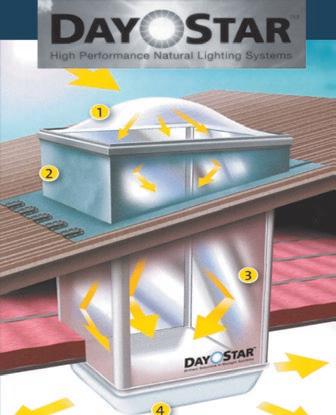


BY JESSICA DAMIANO
Associated Press
If you're planning to start seeds indoors this season, you probably know you'll need seed-starting mix and, of course, seeds. But have you thought about containers? You might be planning to buy rimmed trays, peat pots or compart-
But with a little imagination, you can easily upcycle items you already have. If you have a coffee maker that uses plastic pods, peel off their foil covers, dump out the coffee grinds and
underneath. The pods are the perfect size for starting seedlings. Most other small plastic food containers, such as single-serving yogurt cups or egg cartons are also well-suited for starting seeds. Just poke holes in the bottom to allow water to drain. You can even make pots from toilet-paper rolls and newspaper.
If you're planning to start seeds indoors this season, you likely know you'll need a growing me-
dium (packaged, sterile seed-starting mix is ideal), a sunny windowsill or grow lights and, of course, seeds. But have you given thought to what containers you'll use?
You might be planning to buy rimmed trays, peat pots or compartmentalized
your only options. With a bit of imagination, you can easily upcycle items you already have while keeping your money in your wallet.
Try some small food containers
If you have a coffee maker that uses K-Cup-style plastic pods, don't discard them after brewing. Instead, peel off their foil covers, dump out the used coffee grinds and remove the
The pods are the perfect size for starting seedlings, and can be washed, disinfected and reused from year to year. You'll notice the machine even poked a hole in each pod's bottom for drainage.
Most other small plastic food containers, such as single-serving yogurt cups, clamshell-type salad packages or egg cartons, are also well-suited for starting seeds -- as long as you've poked holes in their bottoms to allow excess water to drain.
Newspaper or cardboard work well, too
You can even make seed pots from sheets of newspaper. Much of today's newsprint uses soy-based
ink, which is generally considered non-toxic, suitable even for starting edibles.
Here's how: Fold a newspaper page in half lengthwise, then fold it a second time to achieve a long strip. Next, place a tomato paste can, which is the perfect size for a seed pot, along one edge of the newspaper, a couple of inches from the bottom. Then, roll the newspaper tightly around the can to form a cylinder.
Fold the excess newspaper in at the base of the






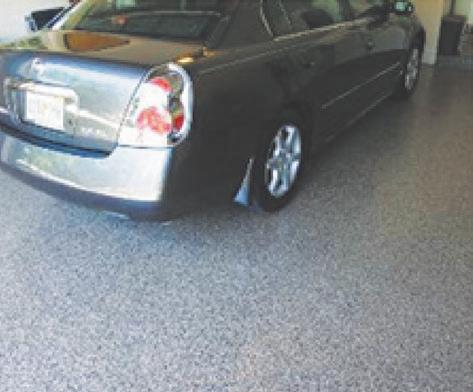










Renovations around the house require an investment of time and often considerable amounts of money. Findings from the 2024 U.S. Houzz & Home Study show that home renovations are becoming more expensive. The median renovation spending for homeowners has gone up 60 percent since 2020. Angi, a home services website, reports the average renovation cost for homes between 1,250 and 1,600 square feet is $51,772, butovations depends on the scope of the project.
Homeowners who are conserving funds can rest assured that it is possible to make meaningful changes both inside and outside
a home without breaking the bank. Here are some ways to renovate a home on a budget.
• Create a budget and don’t waver. Figure out exactly what you can afford for a renovation and then make that your maximum dollars spent. Research comparable projects in your area and be honest about whether you can afford the renovation as-is or if you must adapt ideas to
to build in a cushion of around 15 to 20 percent for any unforeseen expenses that may arise once a renovation is underway.
suggests looking for ways to maximize your current

layout before you invest in major renovations like an expansion. Bring in a designer with an eye for utilizing space. For example, see how you might be able to replace shelves with pull-out drawers in the


plans also can help to lower costs.
• Balance DIY with hiring contractors. You can save money by tackling some projects yourself, but only if youdent in your renovation skills. Rather than risk making costly mistakes and having to redo things, hire well-vetted professionals but ask if there’s any DIY work you can do to cut costs.
• Check clearance and resale stores. Shop dis-
count stores for building materials to save money. For example, if a builder ordered too many cabinets they may offer them to Habitat for Humanity Re-
home improvement stores and donation centers.
Checking the clearance and markdown sections of other stores may yield considerable savings on items needed for a renovation. Warehouse retailers like Costco or Sam’s Club also
certain home improvement materials and furnishings.
• Take advantage of free services. Certain stores may offer things like free consultations with designers who can show you what a renovation can look like.
This is advantageous to the stores because once you see the potential you’re more likely to buy the products, even if it’s not mandatory.
• Resurface instead of redo. Certain items can be made to look new with minimal effort. Paint is a relatively inexpensive tool that can transform walls and more. A good hard-
a new coating instead of an cabinets can be resurfaced instead of replaced as well. Finding ways to perform home renovations on a budget may require some creative thinking, but it’s possible to get results at the right price point.

















Millions of celebrants welcome family and friends into their home as overnight guests each holiday season. Hosting loved ones during the holiday enables families to create the kind of lasting memories that make December such a special time of year.
As hosts prepare their homes for loved ones this holiday season, they can consider these tips to make guests rooms as welcoming as possible for friends and family.
• Check the bedding and replace, if necessary. It’s easy to overlook the comfort of bedding in a guest room, particularly since hosts may never sleep in their own guest rooms.

When furnishing a guest room, it’s not unheard of to repurpose an existing mattress from an owner’s suite or another room and use for guest room bedding. Though that’s acceptable, it’s necessary to periodically inspect a guest room
mattress to make sure it’s still comfortable and supportive. If not, replace the mattress. A mattress topper, a new comforter and a new set of soft sheets also can make guest room bedding more comfortable.
• Clear out the clutter.
Guest rooms can easily become depositories for old furniture and other items, which can create a cluttered and less than welcoming atmosphere in a space. Give each guest room a thorough once-over before guests arrive, removing pieces that might be creating a claustrophobic vibe. Keep in mind that guests will bring luggage, so a less cluttered space with ample room for their bags can make it easier to settle in.
• Take a cue from hotels. Hotels ensure guests have ample creature comforts
hosts can do the same when welcoming loved ones into their homes. Provide ample bed and bath linens,
ensure the room has ample lighting so guests can read at bedtime and get dressed in plenty of light in the morning. A foldable luggage rack is another nice touch that can keep guests from having to dig through
• Add an armchair where possible. A spacious guest room allows hosts to provide some extra creature comforts. If the room allows, place a comfortable armchair and side table in the space so guests can read a book or catch up on the news on a tablet or smartphone. A comfortable, quiet and secluded place to sit provides guests a respite from the hustle with holiday guests.
• Install window coverings, if necessary. A feeling of privacy is another important creature comfort guests will appreciate.
Replace existing window treatments if they do not provide adequate privacy or if they do not keep the elements out in the morning. For example, a room that is sun-soaked by early morning each day may make it hard for guests to
blackout curtains or a new set of blinds allows guests to determine the amount of natural light that will greet them each morning.
help holiday hosts turn their guest rooms into welcoming spaces for their loved ones.















New growth is a hallmark of spring, whether it plays out in the birth of birds and bunnies or with the returned buds on trees and plant stalks. While most greenery rebounds naturally, lawns may need a little extra TLC in order to return to their once lush, green glory.
Revitalizing a lawn in spring is a multifaceted process but can be well worth the reward when green grass adds to a beautiful landscape and functional yard. Here is how to get started when the weather warms, courtesy of The Farmer’s Almanac and The Home Depot.
• Clean up debris. Spend a few hours raking up leaves from the lawn and removing any other winter debris like twigs so that air can reach the grass below. Also remove any thatch that has developed.
• Test the soil. Take a sample of the soil to determine its pH level and nutrient needs. Then you can make adjustments to set a strong foundation for the lawn to grow.
• Do some weeding. Pull out any weeds that have poked through early on and apply a pre-emergent herbicide to prevent additional weeds from taking over.
• Start the aeration pro-
cess. A core aerator punches holes into the soil. This enables air and water to penetrate through to the roots.
• Overseed the lawn. Apply grass seeds over the lawn, paying special attention to any bare or thin arin the lawn.
• Water consistently. It is important to water the lawn deeply and consistently, especially when the weather is dry, to help promote strong root development.
• Time fertilizer correctly. Apply a spring fertilizer around three weeks after the lawn starts to turn or three mowings. If fertilizer is applied too early it can feed weeds instead of the grass and result in fertilizer runoff.
• Mow to an appropriate height. Begin to mow when the ground is dry enough and the grass is long enough to need cutting. Leave some length to the lawn; otherwise, sunlight will reach the soil and encourage weed seeds to germinate.
With a little elbow grease at the start of spring, homeowners can establish strong and healthy lawns.



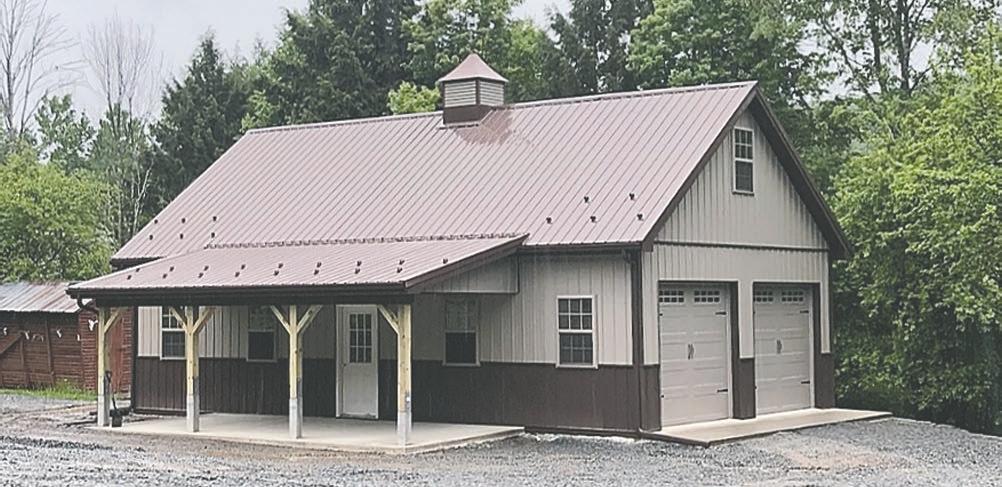

Gardening is a popular hobby all over the world.
Ruby Home Luxury Real Estate estimates there are 71.5 million gardening households in the United States alone. That translates to around 185.9 million people engaged in some form of gardening, which places the U.S. among other countries where gardening is wildly popular, including Australia and China.
A greater number of people are showing interest in gardening, which is a rewarding hobby that’s good for the mind and the body. Those who are new to gardening may need a crash course to get started. These pointers can help anyone foster a newfound passion for gardening.
Choose the best location
Spend time in the yard and decide where to house a garden. A far-off corner may get the most sun, but will you forget about the garden if it is too far away? Ideally, the garden should be located where it will get at least six to eight hours of sun each day. There also should be a water source nearby. The spot also should be convenient so that it is easy to go and pick vegetables or prune
Start small
If you’re new to gardening, begin with a small garden footprint so that you can get your feet wet. A raised garden bed can be a good starting point because it is contained and easy to maintain. As your experience (and garden) grows, you can add to the garden size the next time around.
It’s possible but unlikely that the soil in the backyard is the perfect mix to grow healthy plants. It’s more likely that the gardencation. You can test the soil makeup with do-it-yourself kits or work with a garden center. A garden typically requires a mix of compost to add nutrients to the dirt; peat moss or coconut coir to help with water retention and to make the soil lighter; and vermiculite that helps to retain water. A compost bin set up at the same time as the garden allows gardeners to continually produce nutrient-rich food to add to the garden.
It’s best to keep a few things in mind when planning the garden. Think about what will grow well in your climate. Consider

how big the garden will be and the size of mature plants. A small garden will not be able to accommodate corn, for example. Also, how would you like the space to look and what will be its function? Is this a purely aesthetic garden or one that will be food-bearing?
If you’ll be starting a garden from seeds, it’s best to start indoors before your region’s frost-free date. This way the delicate plants will get the needed care and can establish before they go outdoors in the ground. Keep them humid
by covering the seedlings in plastic wrap. You can start the seeds in different containers, even empty egg cartons. Transplant to larger containers after the seedlings grow a second set of leaves. Once you’re free from overnight frost, you can place the established, strong seedlings in the ground.
An automatic watering system, such as a timer hooked up to the sprinkler, can keep the garden watered, which increases the odds of success. Then it’ll only be a matter of weeks before the garden can be enjoyed.







Longer hours of daylight and warming temperatures are hallmarks of spring and each of these variables do much to contribute to the reputation of a season that’s become synonymous with rejuvenation. After months spent confronting cold temperatures and huddling up indoors, people
conditions of spring irresistible, which compels many to spend more time outdoors.
There’s no shortage of things to do outside in
spring, and the season marks a perfect time to reestablish one’s green thumb and get down and dirty in the garden. Gardening is a rewarding and healthy activity, though some, particularly seniors, may need to approach springtime sessions in the garden with a heightened degree of caution. Seniors can keep these health and safety tips in mind as they celebrate the return of spring and what that means for their gardens.

• Recognize that gardening is exercise. The Centers for Disease Control
gardening as a good form of exercise, and evidence supports the notion that gardening is a particularly -
ical activity. A 2024 meta-analysis published in the Journal of Neurology, Neurosurgery & Psychiatry indicated that individuals who engaged in low levels of leisure time physical activities such as gardening are likely to have a lower risk of stroke than peers who are sedentary. It’s important to keep
when gardening, which is perhaps more physically demanding than some may recognize. Seniors can approach gardening just like they would other forms of exercise, taking the same precautions, such as stretching before and after each session and making a concerted effort to remain hydrated, while out in the garden.
• Incorporate rest into your garden routine. Rest is vital for anyone engaged in physical activity, including gardeners. Frequent breaks during gardening sessions can help avoid strains and sprains and provide opportunities to hydrate and get out of the sun. If possible, seniors can identify a shaded spot on their properties and place a bench there so they have somewhere to rest during gardening sessions.
• Utilize ergonomic gardening tools and other specialized products. The Center for Excellence in Disabilities at West Virginia University notes that ergonomics studies movements of a person’s body during physical activities in an effort to produce tools that ensure a task has as little physical impact on the body as possible. Ergonomic tools are designed to lower injury risk, improveisfaction that stems from performing a particular activity. Before each gar-
dening season, seniors can inspect their existing tools and replace them with ergonomic alternatives, if necessary. In addition, seniors can utilize specialized products, including long-handled gardening tools that reduce the need to bend over or kneel down, to further reduce their risk of injury while working in the garden. These simple strategies can ensure seniors’ springtime gardening sessions are as safe as they are rewarding.


































The global COVID-19 pandemic opened people’s eyes to many things. One of the more lasting impressions was how the traditional workplace environment was not as essential as people once thought. Millions of people pivoted to remote work during thecant percentage of those individuals continue to work from home.
Remote work is now common in many industries. According to an Upwork study, 22 percent of the American workforce will be remote by 2025. The Pew Research Center says around 22 million employed adults (ages 18
and over) in the United States work from home all the time, which is equal to about 14 percent of all employed adults. Statistics Canada said 18.7 percent of Canadian workers worked mostly from home in May 2024.
Homeowners are in-
homes with spaces that can accommodate working from home. Maximizing a comes down to some key components.
Chances are that it will be nearly impossible to get any work done without a computer. Most people
have devices at home, but it’s best to check with employers to see which kind
needed in a machine to run the types of applications that keep the business functioning. An older laptop or PC might need to be upgraded to a newer, more powerful model.
Reliable internet connection
Connectivity is vital when working from home. Remote workers must be accessible via email, and many companies rely on messaging applications or VoIP (voice over internet protocol) telephone systems. Those who have been
considering an upgrade to bandwidth and internet speed may want to take the plunge if they expect high volume of data uploads and downloads and constant connectivity. Experts advise a minimum of 100 Mbps download speed and 10 Mbps upload speed as a good starting point for remote work.
Ergonomic desk and chair
Remote workers can
furniture that’s customized to their needs, rather than what would just be provided in a traditional consider is a convertible
desk, which can be raised or lowered to accommodate sitting or standing at a workstation. No home
comfortable chair. Choose a chair with lumbar support and adjustability.
A laptop stand can help a person avoid a condition called “tech neck,” which the Mayo Clinic describes as being caused from poor posture while using technology. Instead of looking down at the laptop, the stand will raise the device to a proper eye level. Use a wireless keyboard and mouse to make it even more comfortable and con-
venient.
Noise-cancelling headphones
Many times a home of-ever nook in the house is available. That may mean it is adjacent to a living room or the kitchen in the midst of the hustle and bustle. Things can get noisy, and a pair of quality noise-cancelling headphones can help mitigate ambient sounds. Remote work continues to gain steam and home demands of working from home.






















To those unfamiliar with lawn maintenance, the term “scarify” might sound like something horror movie directors hope to do to audiences who watching has nothing to do with everything to do with promoting a lush, green and
What does it mean to scarify a lawn?
Scarifying a lawn involves the utilization of a organic matter that can build up on a lawn over develops and settles in on a lawn, it can hinder growth by blocking water and nutrients from reaching the -
lawn or one where thatch can help to ensure a lawn nutrients, such as those which are often found insary?
Lawn and garden tools make yard work easier, and

electric, so homeowners will need the ability to plug into a power source
They also will need to negotiate around the cord, which should be a lengthy -
ers with particularly large properties may want to purchase a gas-powered are harder to come by than their electric counterparts, and could be considerably
When should I scarify?
Thatch buildup also can promote the growth of moss, so scarifying can decrease the chances that healthy grass is pushed to the side by sponge-like moss that can quickly over-
Is there anything I should know about scarifying?
A lawn that has never likely to produce a substantial amount of thatch, which can be made up of old grass clippings, leavestachable buckets that collect the thatch, such baskets tend to be rather small
but many effective ma-pensive when compared to more costly machines likely can make dethatching easier, some homeowners might be able to get by withever, it’s less labor-intensive to forgo a rake and useAre there additional reasons to scarify?
frequent stopping that can add a considerable amountsible, homeowners with
cant thatch buildup might want to scarify without the
will leave lots of piles of dead organic matter strewn about the yard, but the job is likely to go more quickly if those heaps are gathered up with a rake after scari-
Constant stopping to empty thatch will compromise
stun after a scarifying ses-
look worse, but that’s onlythatched lawn gets some water and fertilizer, the soil beneath will be more ready to receive them, and the lawn will soon look much
same?
to do their homework and read product reviews be-
ers now on the market are
Various lawn professionals recommend scarifying a lawn at least once per year, and springtime is a popular season to dotial fertilizer application so that does not block the lawn from getting the nusecond scarifying session
Scarifying can be an important step in creating a stunning and healthy











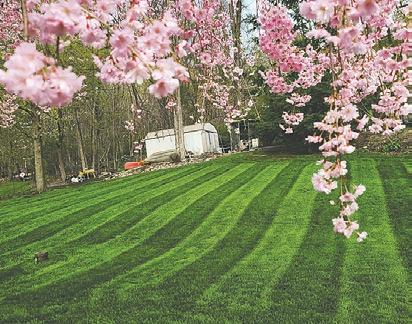



Homeowners may think they have to tear down walls or build room extensions to transform their homes with renovation projects. But small projects can yield impressive results, and that’s something homeowners working with limited budgets can keep in mind. There’s no shortage of small projects that can change the look and feel of a home. Many of these undertakings can be achieved with a modest investment.
• Front door replacement: A new front door instantly improves curb appeal and can make a home more secure and the existing front door is an even smaller project that still offers appeal.
• Lighting addition: Whether a homeowner enlarges a window or adds skylights, natural light can produce incredible results. Investing in new lighting can feel like expanding a space without pushing out walls.
ture upgrades: Faucets and door pulls are used every day. Swapping ex-
thing a little more modern can unify spaces and provide subtle changes that enhance these popular spaces.
scratches can adversely affect the pristine look
Homeowners can polish a

A professional service
railings or replace them while upgrading the stair treads.
tion of the cost of a new
• Interior paint: Change the color of walls, doors, cabinets, or even furniture with paint. All homeowners need is a paint color that inspires them and a little bit of time.
• Replace outlet covers: Upgrade outlet covers with screwless options.
Screwless plates for outlets and light switches can make walls look more sleek.
• Entry organizer installation: Banish clutter from the home by catching it at the door. An entry organizer with spaces for shoes, coats, backpacks, and shopping bags can be eye-catching and functional.
• Carpets cleaning: Soiled carpets can look drab and dingy. Homeowners can rent carpet-cleaning machines or hire services to revitalize carpets with a deep cleaning.
Small changes around a home can create a big impact without breaking the bank.
• Exterior lighting: Lighting isn’t just important inside. A welcoming glow in the yard is awe-inspiring. There are many options, including ones that do not need to be hard-wired to the circuitry inside the home.
• Staircase renovation: Coordinate the staircase to the style in the home with a decorative carpet runner. A secure runner is attractive and can help reduce slipping down the stairs. Tighten shaky



LARGE Selection Of Poly Furniture! Over 200 Pieces In Stock!







Lots to choose from!
Hanging Baskets Fern Baskets Potted Planters



Bedding, Vegetable, Strawberry, Rhubarb, Succulent & Horseradish Plants




Single Pots Garden Seeds Herbs Potting Soil and much more Monday - Saturday 7am - 7pm

Homeowners may think they have to tear down walls or build room extensions to transform their homes with renovation projects. But small projects can yield impressive results, and that’s something homeowners working with limited budgets can keep in mind.
There’s no shortage of small projects that can change the look and feel of a home. Many of these undertakings can be achieved with a modest investment.
• Front door replacement: A new front door instantly improves curb appeal and can make a home more secure
Painting the existing front door is an even smaller project that still offers appeal.
• Lighting addition: Whether a homeowner enlarges a window or adds skylights, natural light can produce incredible results.
Investing in new lighting can feel like expanding a space without pushing out walls.
• Kitchen and bath
Faucets and door pulls are used every day. Swapping exist-thing a little more
modern can unify spaces and provide subtle changes that enhance these popular spaces.
and scratches can adversely affect the pristine look of a
Homeowners can
store its shine. A professional service will sand down and at a fraction of the installation.
• Exterior lighting: Lighting isn’t just important inside. A welcoming glow in the yard is awe-inspiring. There are -
cient lighting options, including ones that do not need to be hard-wired to the circuitry inside the home.
• Staircase renovation: Coordinate the staircase to the style in the home with a decorative carpet runner. A secure runner is attractive and can help reduce slipping down the stairs. Tighten shaky




















